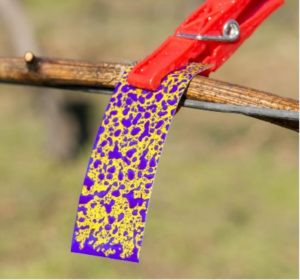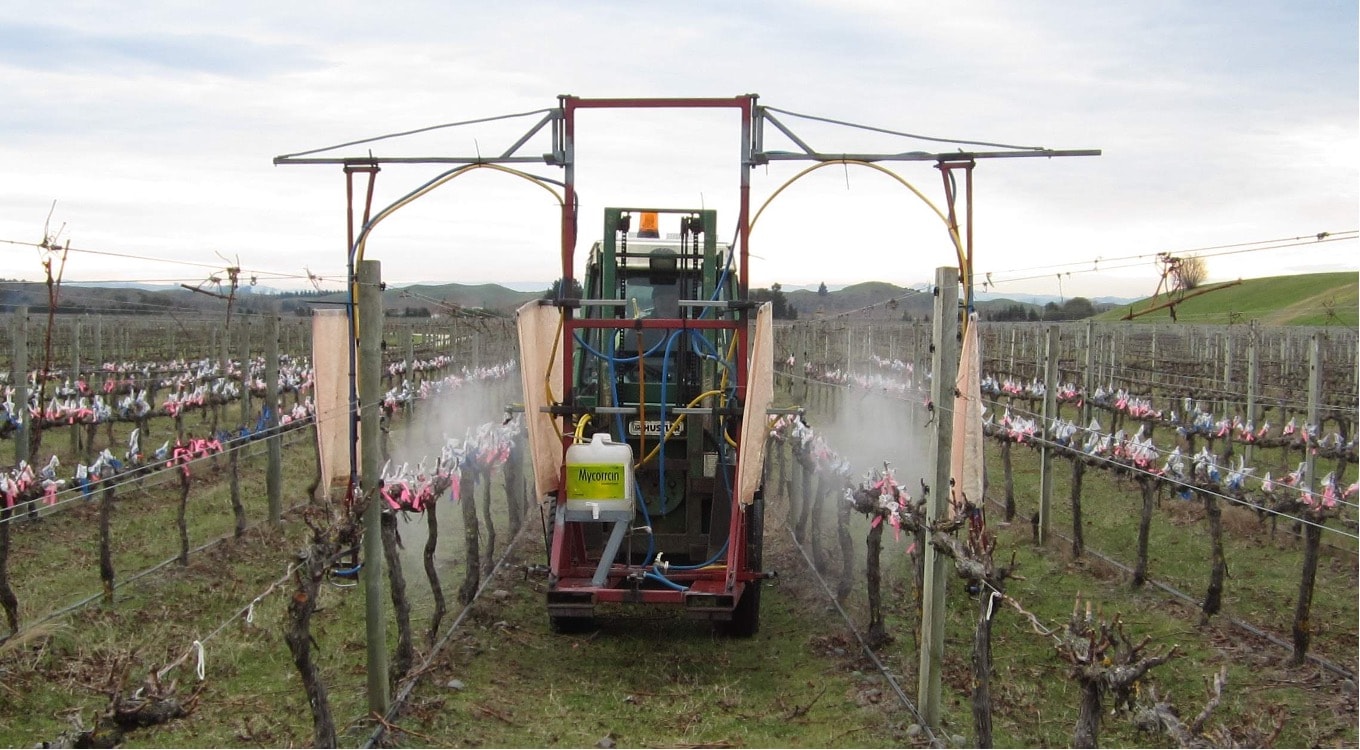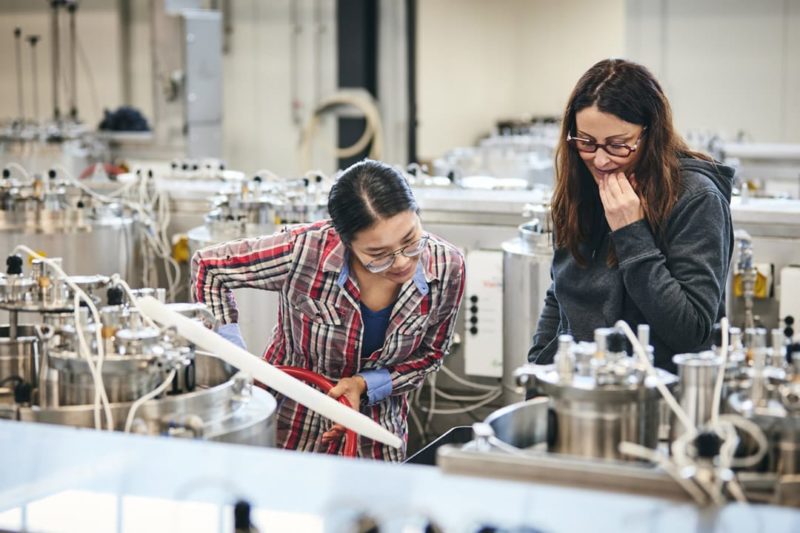Grapevine Trunk Disease (GTD) is a serious threat to New Zealand’s most popular wine. Sauvignon Blanc vines are particularly at risk from GTD, which can greatly reduce the volume and quality of grapes yielded, and the useful life of the vines themselves.

Test swatch
Optimising the management of GTD has been a focus of New Zealand Winegrowers’ research for decades – most recently, as part of the extensive Vineyard Ecosystems Programme (VE), managed by Bragato Research Institute (BRI). Of the many outputs of the VE Programme, the practical application by growers of research into pruning wound treatment and remedial surgery has been one of the most significant in protecting the multi-million-dollar export earner.
In 2013, the incidence of infection from grapevine trunk disease ranged from 0–88% in selected NZ vineyards aged 4–33 years (with an average vine age of 12 years). For Sauvignon Blanc vines aged 20 years, 80% had GTD. Subsequent economic analysis showed that early adoption of preventative wound treatments could minimise the cost of trunk diseases and increase vine longevity.

Testing wound protection spraying by tractor
Direct industry involvement: pruning wound protection at Delegat
As a case study on wound protection, a group of 102 blocks managed by Delegat were selected, comprising Chardonnay, Merlot, Sauvignon Blanc, and Pinot Noir. The blocks, located in both Marlborough and Hawke’s Bay, have had well-documented wound protection management in place since 2006, prompted by the potential economic benefits achieved from vine longevity.
According to Robert Trought, company viticulturist at Delegat, the effort is definitely worthwhile. “You need to look past the immediate cost and look to the long-term benefits,” he adds. “It is your asset you are protecting. If you have young vines, start from day one.”
Across all blocks studied, the maximum incidence of dieback infection increased with vine age (from 20% in 10 year-old vines to 80% in 20-year old vines), whereas the subset of Delegat blocks under active wound management only reached a maximum of 20% incidence of dieback infection over the same range of vine ages.
In the time remaining in the VE Programme’s GTD project, Sosnowski plans to confirm the curative and preventative properties of fungicides registered for use in New Zealand. The goal is to inform recommendations to maximise the period of wound protection from a single application.
Grapevine Trunk Disease: remedial surgery
Remedial surgery is used to ‘renew’ infected vines by removing diseased wood and reworking vines to improve productivity. Diseased tissue needs to be removed from vines that have GTD, which may include re-trunking. If remedial surgery is not carried out early enough, then vines may need to be completely removed at significant cost to growers. Grower reliance on remedial surgery is set to increase as vineyards in New Zealand are reaching the age that production is likely to be significantly affected by trunk disease.
A new research project on remedial surgery within the VE Programme commenced in 2019 to develop best practice recommendations for New Zealand growers on the optimal time and position for remedial surgery, based on the recovery of watershoots and the distribution of pathogens and disease symptoms.
This particular GTD research on remedial surgery is funded via BRI, as a spin-off study to the wider $7m Vineyard Ecosystems Programme. The remedial surgery research is a collaboration between BRI, New Zealand Winegrowers, South Australian Research and Development Institute (SARDI), Linnaeus Laboratory and Villa Maria.
Three trials were established in mature commercial vineyard blocks requiring remedial surgery. One trial in an organic block of Sauvignon Blanc in Marlborough and one trial each in blocks of Cabernet Sauvignon and Merlot in Hawke’s Bay. Remedial surgery will be performed in winter and spring over 4 years to collect robust field data on watershoot production, the rate of disease progression in trunks and external dieback symptoms. Data will also be collected on crop yields before and after treatment. Vines from all three varieties will be sampled to determine how far in advance of visible symptoms dieback pathogens are found and to identify the main causal agents. In addition to improving best practice guidelines, this research is expected to assist growers in making informed decisions on whether to retrunk or replant.
In 2020 at a workshop in Nelson, growers heard from BRI’s Extension Manager Len Ibbotson, who outlined the progress of the latest research into improving grapevine remedial surgery and, along with vineyard consultant Mark Allen and Villa Maria’s Hannah Tennent, an update on current best practice for managing GTD. Two workshops in Marlborough, and one in Hawke’s Bay followed, connecting with 120 growers in total. Ibbotson says although the study has only been active for two seasons, the research is on track to deliver some useful findings. “It’s hard to beat getting great minds together and being outside in a vineyard bringing science and industry together.”
Dr Eline van Zijll de Jong (Linnaeus) and Dr Mark Sosnowski (SARDI) provided an update on the project at BRI’s Grape Days webinar series in September 2020 (held online due to COVID-19 restrictions). Sosnowski has become a familiar presenter to NZ growers thanks to his many appearances at Grape Days and Romeo Bragato industry events, reporting on GTD topics.
Grape Days 2021 also featured presentations on GTD identification and management by Plant&Food’s Dion Mundy, and a grower’s perspective from Craggy Range in Hawke’s Bay and Delegat in Marlborough.
GTD research in New Zealand and Australia leads the world, with researchers from the VE Programme speaking at international conferences in France in 2018 and Canada in 2019. Research into GTD has also been published 5 times in peer-reviewed journals. The research has also produced 10 research articles in NZ Winegrower magazine, and numerous fact sheets and other resources for growers.

















